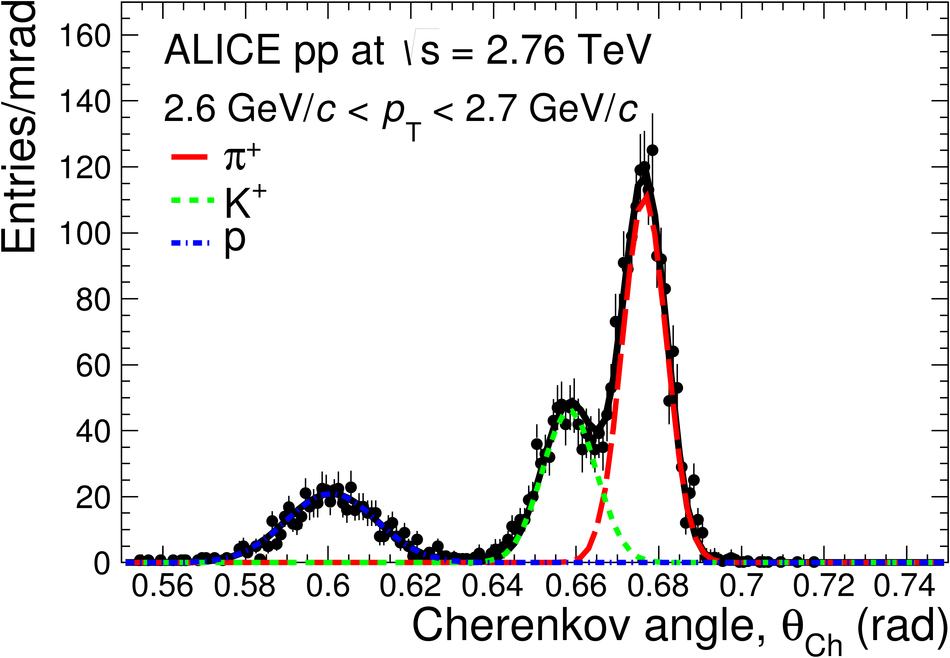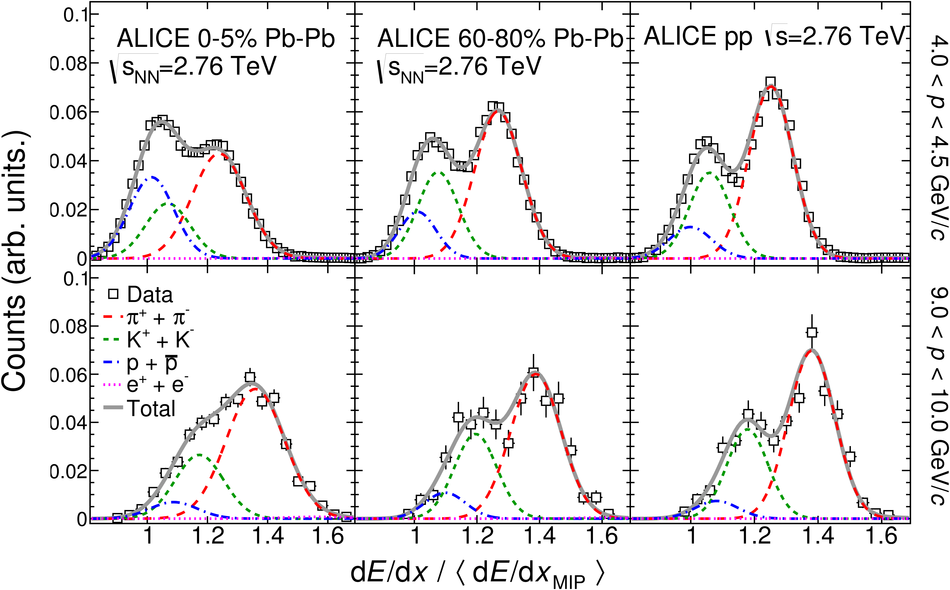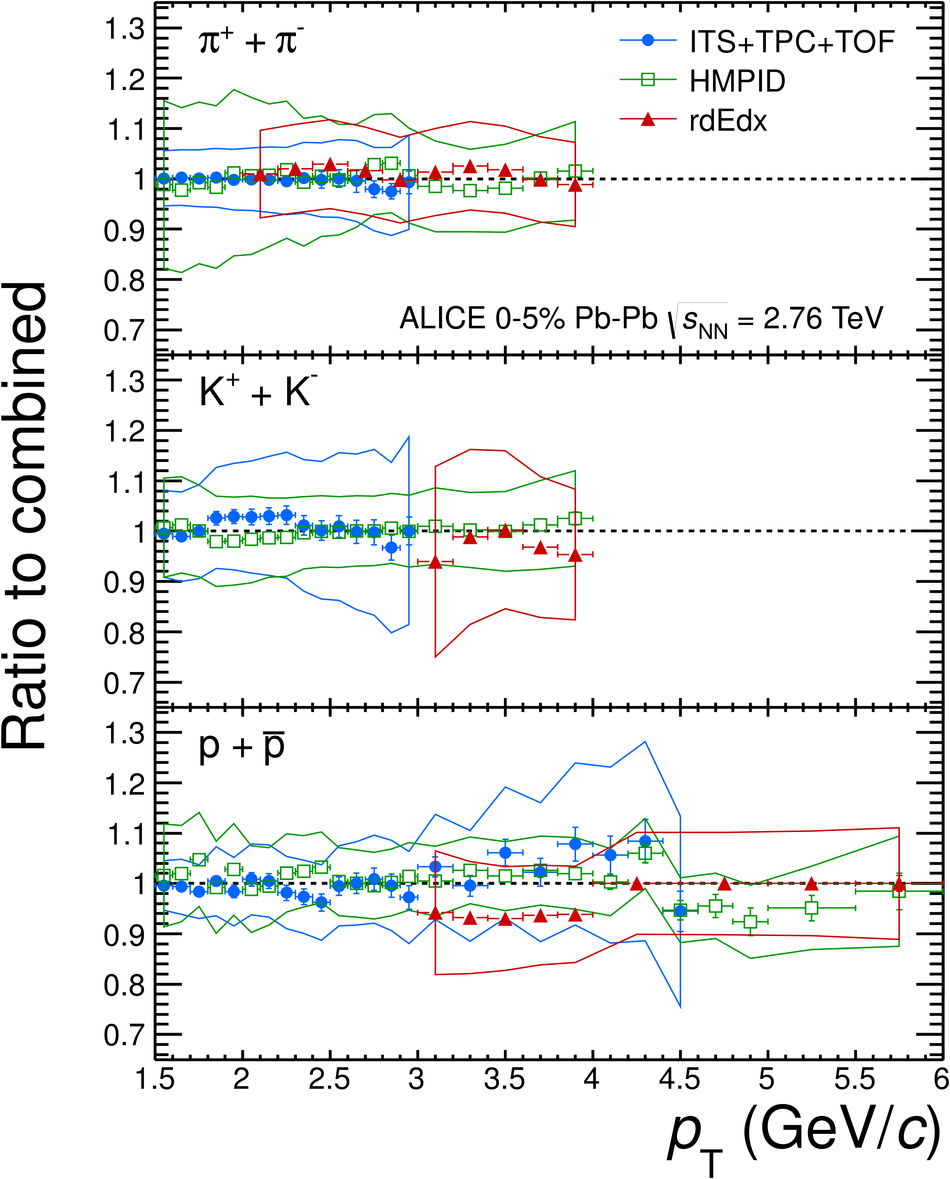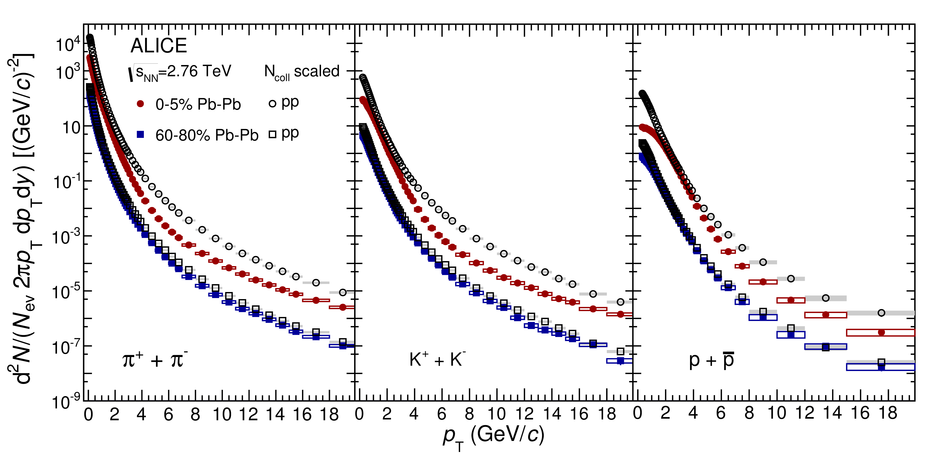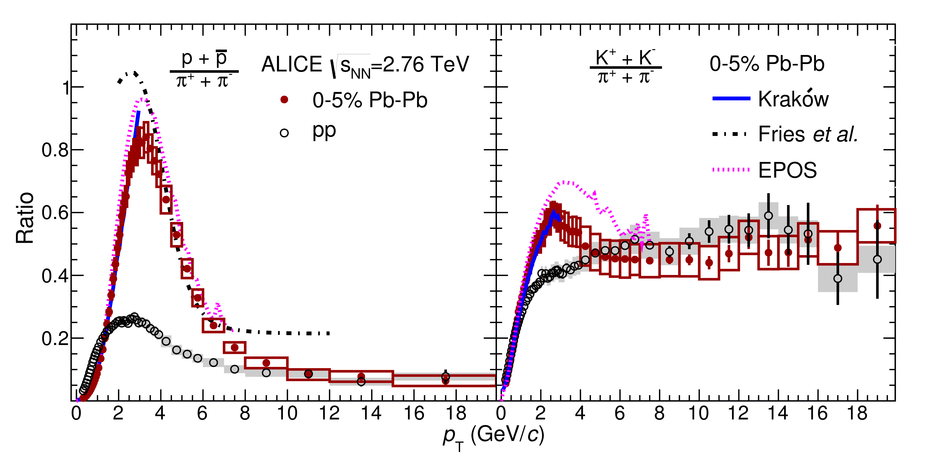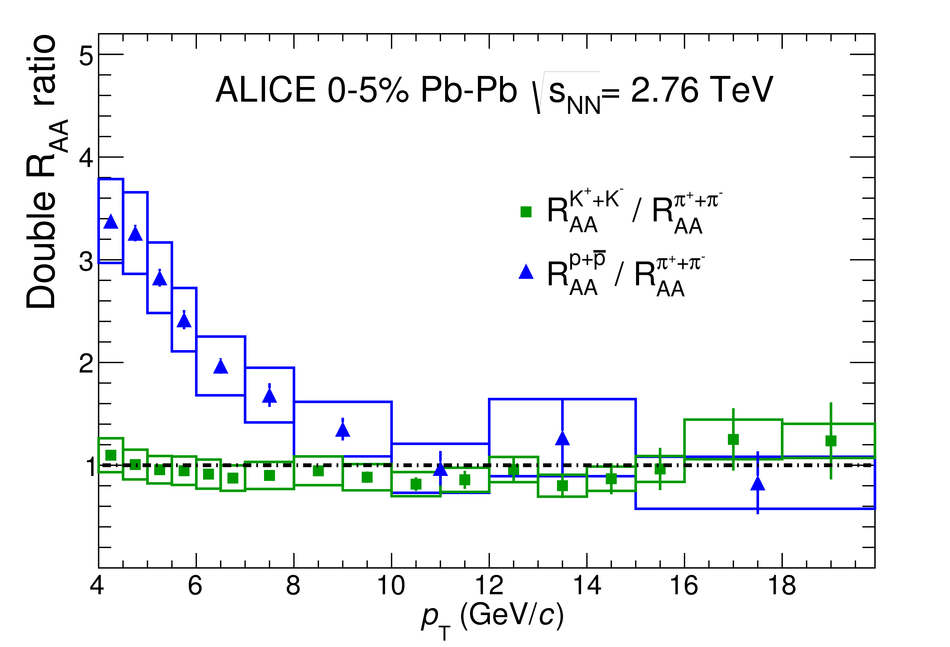Transverse momentum spectra of $\pi^{\pm}$, $\rm K^{\pm}$ and p($\bar{\rm p}$) up to $p_{\rm T}$ = 20 GeV/$c$ at mid-rapidity in pp and Pb-Pb collisions at $\sqrt{s_{\rm NN}}=$ 2.76 TeV have been measured using the ALICE detector at the Large Hadron Collider. The proton-to-pion and the kaon-to-pion ratios both show a distinct peak at $p_{\rm T} \approx 3 GeV/c$ in central Pb-Pb collisions. Below the peak, $p_{\rm T}$ < 3 GeV/$c$, both ratios are in good agreement with hydrodynamical calculations, suggesting that the peak itself is dominantly the result of radial flow rather than anomalous hadronization processes. For $p_{\rm T}$ > 10 GeV/$c$ particle ratios in pp and Pb-Pb collisions are in agreement and the nuclear modification factors for $\pi^{\pm}$, $\rm K^{\pm}$ and $\rm p$($\bar{\rm p}$) indicate that, within the systematic and statistical uncertainties, the suppression is the same. This suggests that the chemical composition of leading particles from jets in the medium is similar to that of vacuum jets.
PLB 736 (2014) 196-207
HEP Data
e-Print: arXiv:1401.1250 | PDF | inSPIRE
CERN-PH-EP-2013-230


